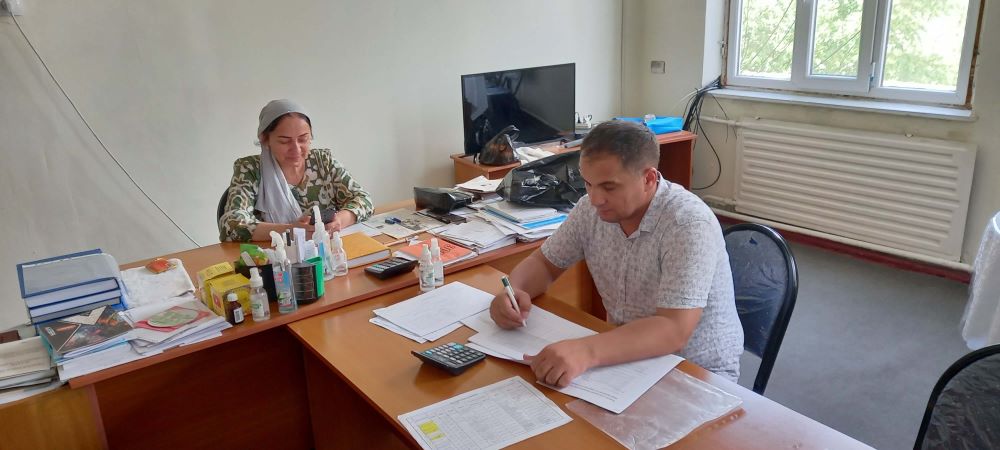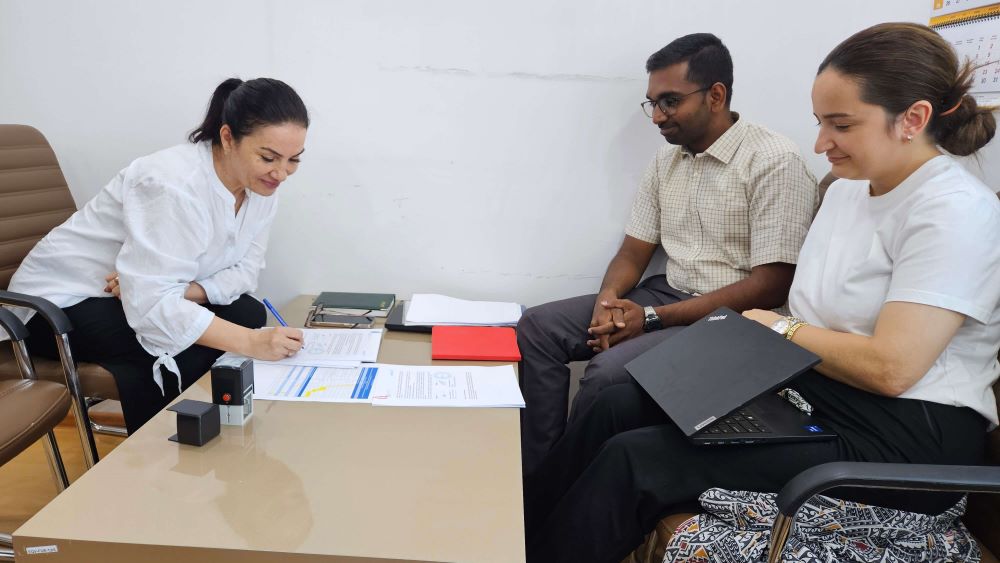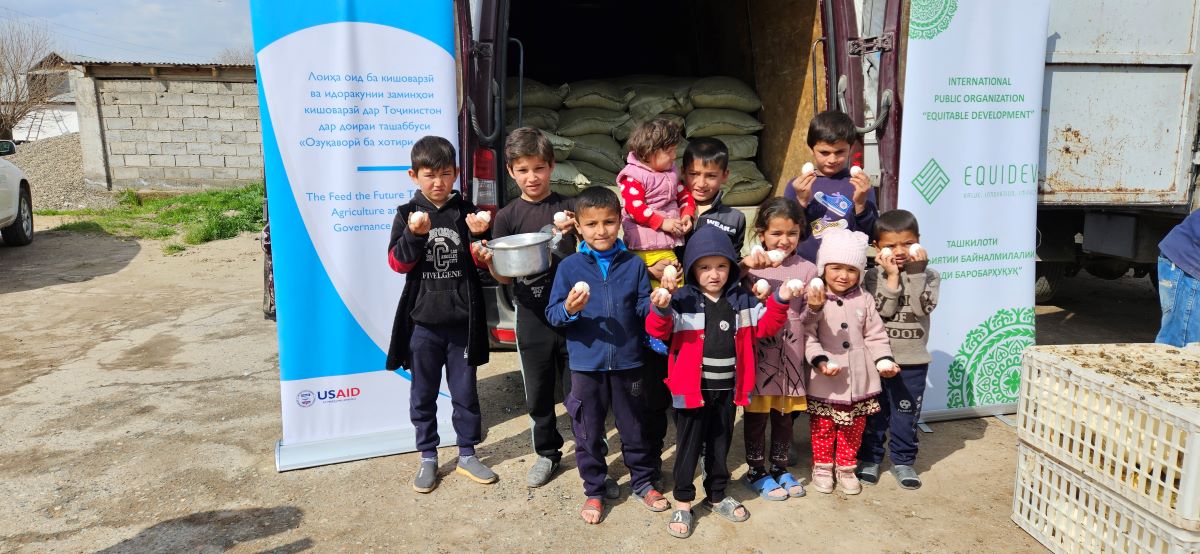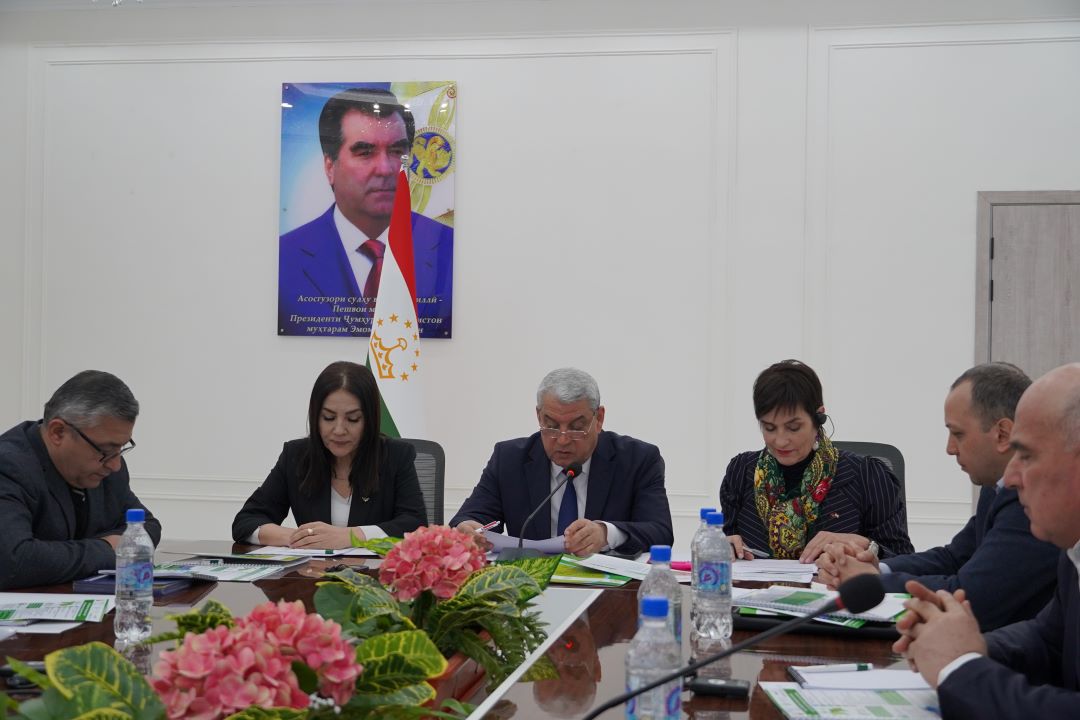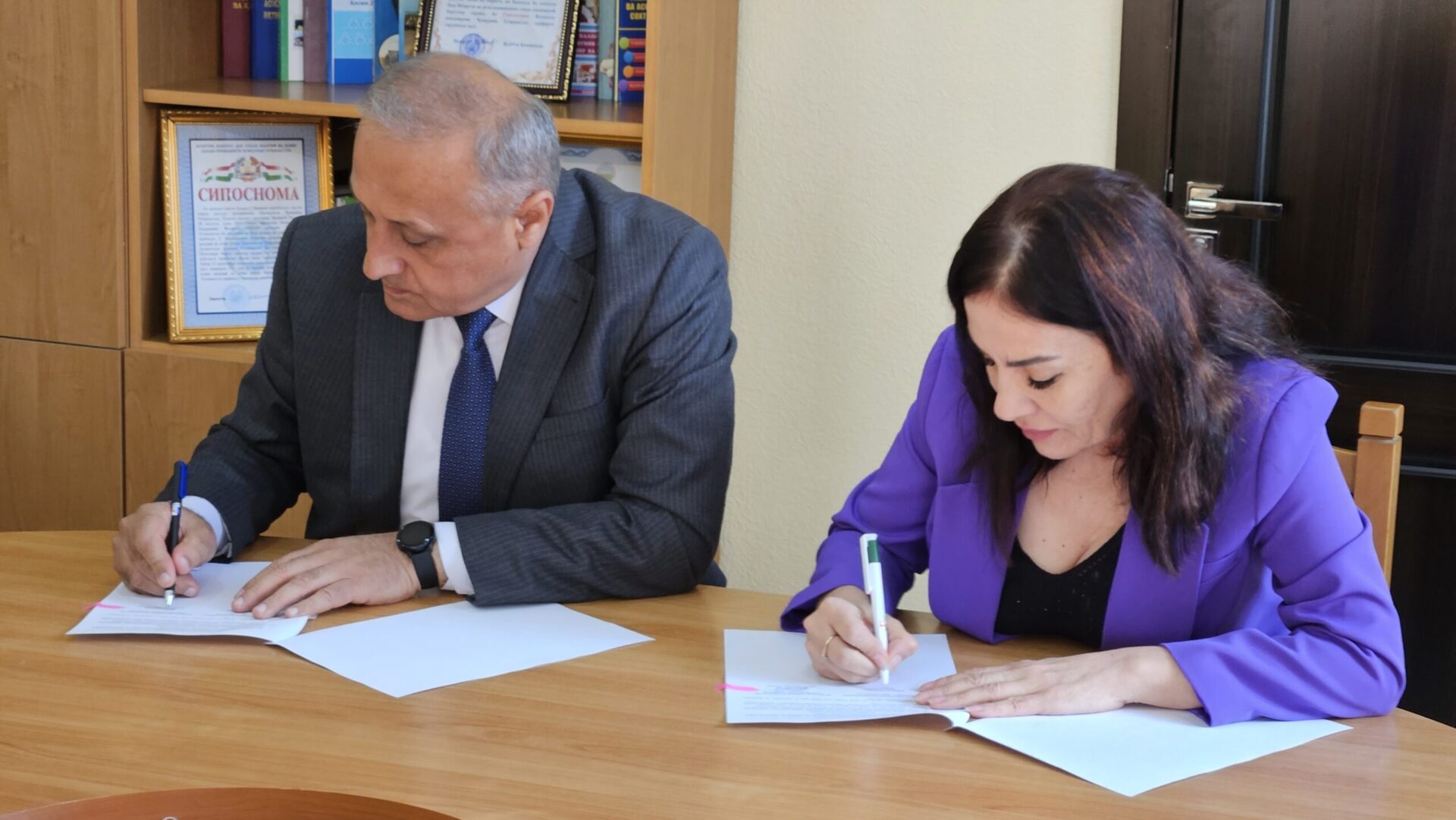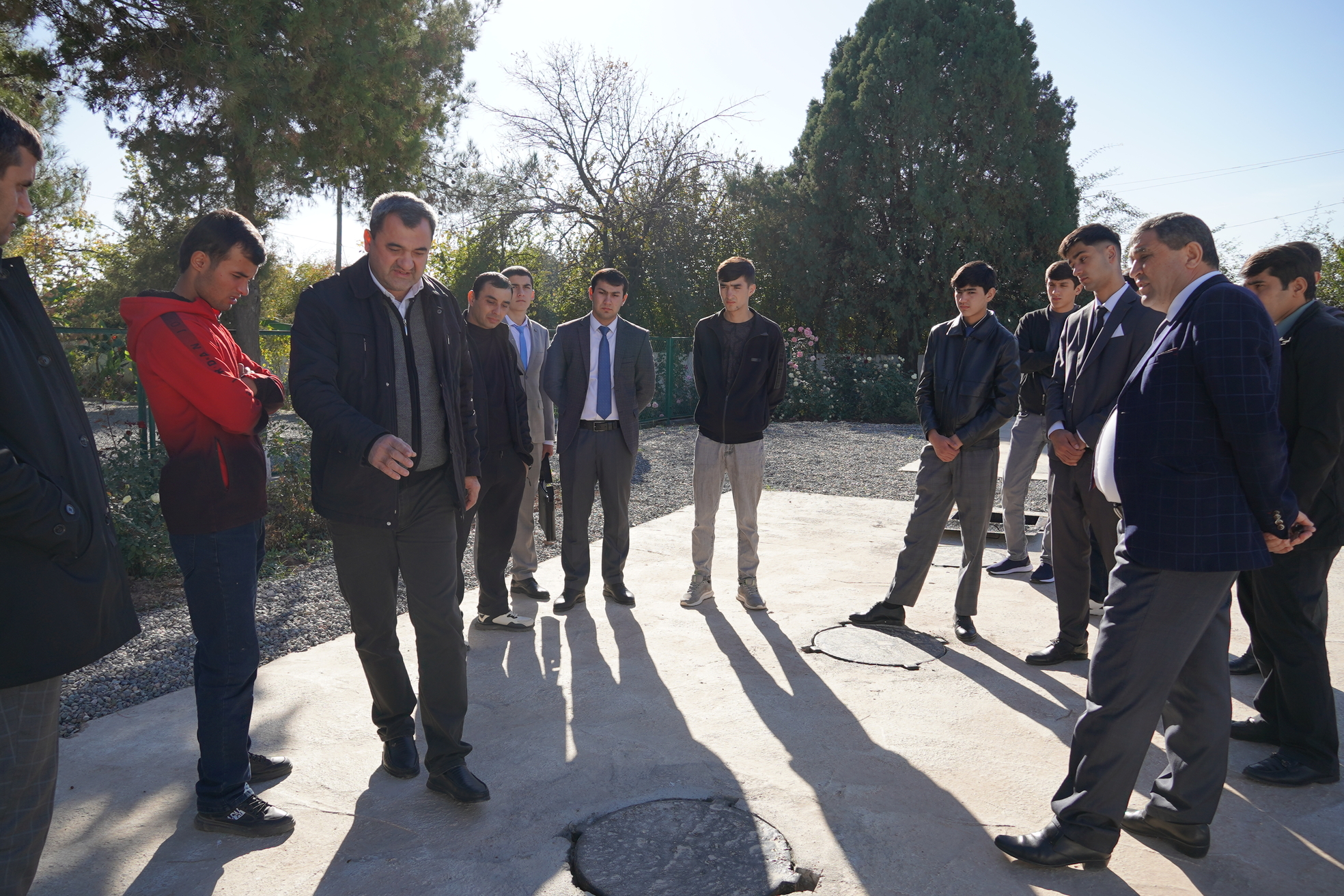
Scanning the tall, snow-capped mountain peaks around him that alternately descend into a steep gorge cut by the River Kishtud and a rugged valley interspersed with picturesque pasturelands, Odinaev Hasanjon, 51, muses, ‘Guitan is such a small spot in this vast landscape. We look so disconnected from the world, yet we are so close to nature’.
It takes more than two hours of a treacherous trek from the closest city of Panjakent to reach Guitan, a village with less than 500 population, or 140 households, connected by narrow, high mountain roads, led through a patchwork of dusty trail, mostly cut off from the rest of the world after the first winter snow.
Horticulture, or apple growing, the mainstay of the village economy, was often a risky enterprise with declining yields, scattered with many seasons of partial or complete crop failures. ‘In my own half hectare of apple and apricot orchard, the good and low production years would alternate. Our worst fear comes true when there is a pest attack or a late snowfall that destroys our crop in years of good production’, said Odinaev, ‘We know our orchards are old and sturdy, but our practices are also now out of date and need a change. As an entrepreneur, I always thought, what we can do protect our orchards and improve our yield?’
Starting in 2016, Oxfam started to build a network of village agronomists in the region to facilitate the last-mile delivery of extension services to smallholder farmers (SHF) engaged in apple and apricot production. Setting up the cadre of village agronomists was crucial for promoting the adoption of new, high-yielding packages of practice among SHFs that could improve the yield of horticulture produce.
To achieve this, Oxfam identified, trained and invested in 23 village agronomists spread across the Zerafshan Valley that can deliver paid onsite advisory services to farmers and double as entrepreneurs supplying quality agriculture input and small agriculture machineries to the farmers. While keeping overall orchard management as their main concern, Oxfam agriculture experts identified two main challenges to improving productivity: the application of high-yielding input to ward off pest attacks and increasing farm mechanisation to boost efficiency.
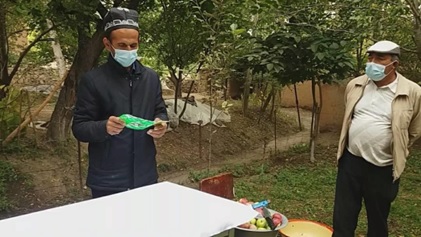
‘When an Oxfam field mobiliser contacted me for a village agronomist role, I was happy but sceptical. I was not sure if farmers used to the traditional approach will ever use imported input like pesticide or will deploy farm machinery. I also had a big doubt that farmers will pay for advisory services’, recalled Odinaev.
Oxfam adopted a rigorous approach to the selection of village agronomists based on recommendations from village producer groups and village community-based organisations, baseline capacity, skill and experience of prospective agronomists, and the ability to mobilise funds for setting up local enterprises. Once the selection process was complete, Oxfam conducted training and exposure trips for the agronomists to enhance their capacity. In the training sessions, agronomists developed a range of skills in orchard management, including pruning, weeding, pesticide application, post-harvest techniques and local-level processing.
Based on past countrywide experience in promoting the village agronomy model (VAM), Oxfam pledged to make partial, 50 percent investments in the enterprise, with the rest coming from the entrepreneur, to cover the cost of setting up a local shop for input supply and small machinery rentals and for establishing demonstration plots. Based on field research, it was clear that SHF generally does not pay for standalone advisory services but is amenable when it is bundled with input supply services. Armed with an understanding of the business model, the Oxfam field team developed a unique business plan for each village agronomist based on their local business projections.
‘The Oxfam training and exposure trip boosted my confidence. I knew a few traditional methods for improving orchards, but the training introduced me to new techniques, especially with the use of machinery and pesticides. But there was one big problem. There are no sources for getting loans for small entrepreneurs like us, so I had to shell out money from my own savings to start my agronomistrelated business. The Oxfam contribution was necessary to meet the gap’, said Odinaev.
Over recent years, Odinaev has provided his advisory services to over 500 famers from his own and neighbouring villages. He personally visits the orchards of his client farmers and dispenses advice based on field observation and diagnosis. ‘As you can see, my advice and input from my shop has changed many traditional practices in the orchard. Now farmers employ a new method of pruning and harvesting using a stepladder; there is a new method to disinfect orchards to prevent pest attack. But the biggest change has come in processing. I have trained hundreds of farmers in advanced processing technology for apples, something I learnt from my trainers from private processing companies. Improved orchard management and advanced local processing have boosted yield and enhanced quality, advancing farmers’ income. I now hear the best-quality dried apple from the village sold for TJS 12 for a kg, something unheard of earlier when the best we could get was TJS 3-8 for a kg. The magic was a change in the way we now produce and process’, said Odinaev with a smile.
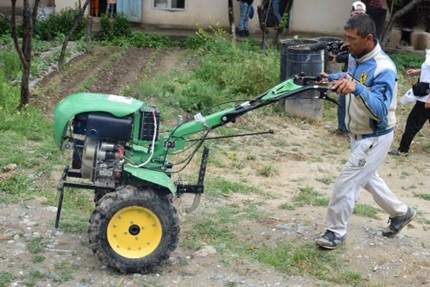
Using the channel of the VAM network, Oxfam pushed for increased mechanisation in orchard management in a way that promotes the twin objectives of the deeper engagement of women in production activities and a direct positive impact on soil moisture conservation in the farmland. With support from Oxfam, VAMs introduced moto-block, small, hand-driven, dieselpowered mini-tractor equipment used for ploughing orchards. Earlier, this was carried out manually through time-consuming hard labour and was the exclusive domain of male farmers. The method was also inefficient concerning the periodic renewal of soil fertility through mechanical ploughing. Motoblock has changed that completely with the more efficient renewal of soil moisture conservation, which is critical for sustaining productivity. ‘Earlier, you would rarely see a woman doing hard manual work in our orchard. But now, women running moto-block is a common sight. The change has come not only in the orchard but also in our mindset’, concluded Odinaev.

